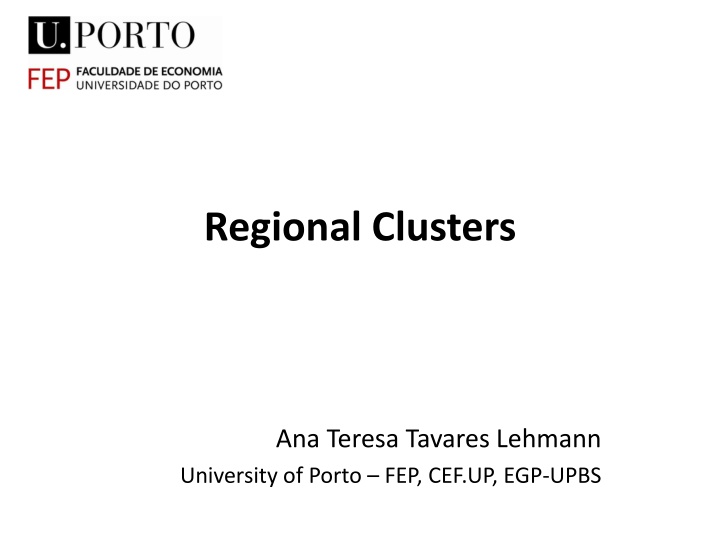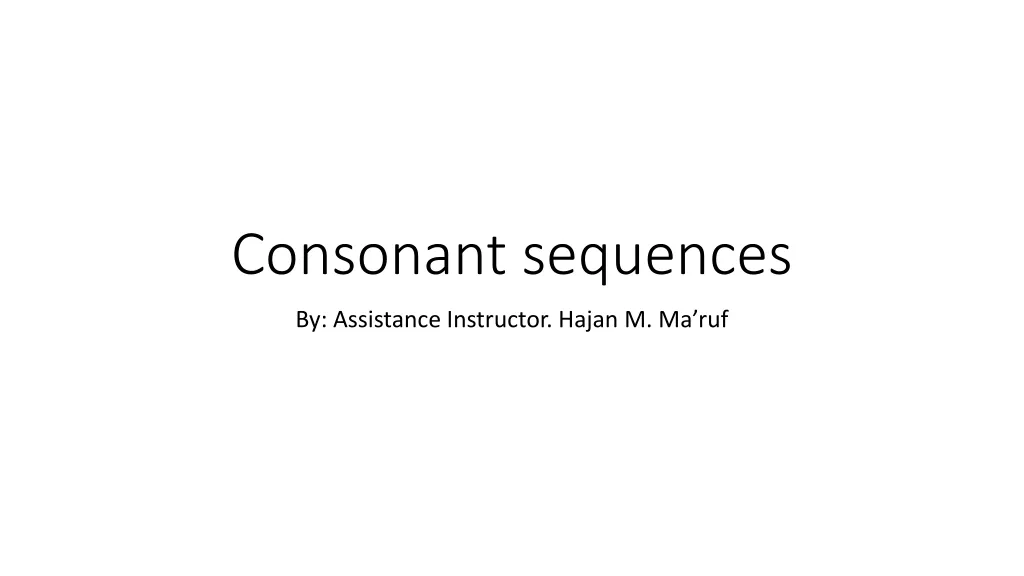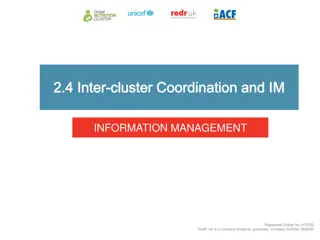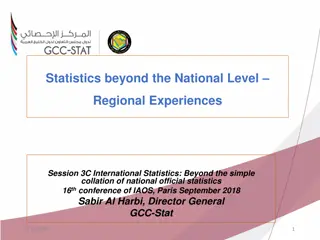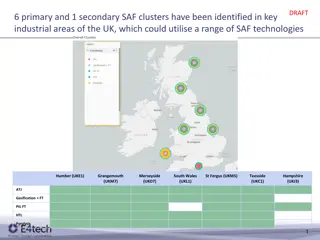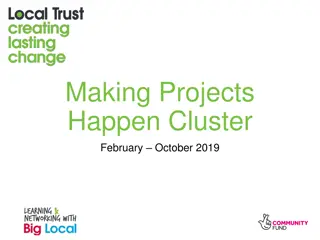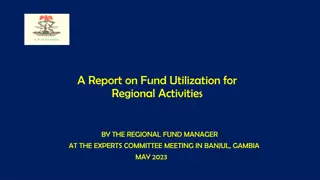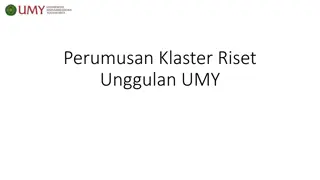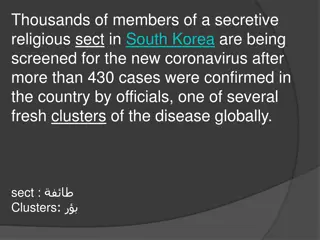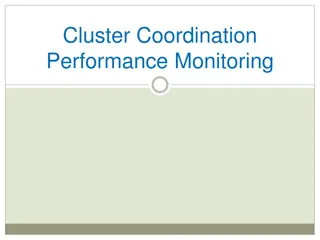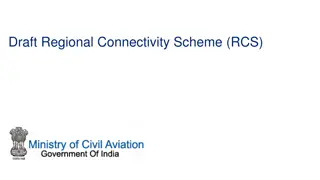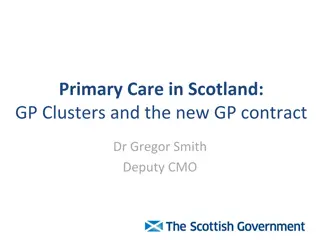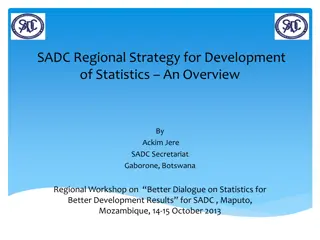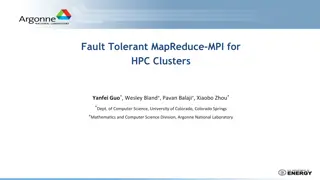Regional Clusters
Ana Teresa Tavares Lehmann explores regional clusters at University of Porto FEP, CEF UP, EGP-UPBS. The study focuses on the impact of clustering on regional development and economic growth, offering valuable insights and analysis into the dynamics of these clusters. By examining the unique characteristics and interactions within these clusters, the research sheds light on their contribution to innovation, competitiveness, and sustainability in regional economies. Ana Teresa Tavares Lehmann's work provides a comprehensive understanding of how regional clusters operate and thrive in the context of academic institutions such as University of Porto FEP.
Download Presentation

Please find below an Image/Link to download the presentation.
The content on the website is provided AS IS for your information and personal use only. It may not be sold, licensed, or shared on other websites without obtaining consent from the author.If you encounter any issues during the download, it is possible that the publisher has removed the file from their server.
You are allowed to download the files provided on this website for personal or commercial use, subject to the condition that they are used lawfully. All files are the property of their respective owners.
The content on the website is provided AS IS for your information and personal use only. It may not be sold, licensed, or shared on other websites without obtaining consent from the author.
E N D
Presentation Transcript
Regional Clusters Ana Teresa Tavares Lehmann University of Porto FEP, CEF.UP, EGP-UPBS
Clusters: Working Definition Geographic specialized industries, standards agencies, trade associations) in a particular field that compete but also cooperate concentrations suppliers, and associated of interconnected providers, institutions companies, in related universities, service firms (e.g., (Michael Porter, 2000)
Clusters not a new concept Marshall 1890, 1920 Industrial districts; Spatial dimension Agglomeration economies; Externalities something in the air When an industry has thus chosen a locality for itself, it is likely to stay there long: so great are the advantages which people following the same skilled trade get from near neighbourhood to one another. The mysteries of the trade become no mysteries; but are as it were in the air... (A. Marshall, Principles of Economics, 1890)
Clusters not a new concept 3 key aspects: Knowledge spillovers Input-output relationships Labour market pooling Collective efficiency and increasing returns Benefits of a shared vision, co-location and co-evolution Specialisation increasing Productivity - Competitiveness Clusters as a convenient and pragmatic organising principle through which to focus resources and build partnerships Building strong regional economies takes decades
Regional Clustering From Fordism to post-Fordism: From hierarchical firms to networks Alliance capitalism (Dunning, 1997) The Associational Economy (Cooke and Morgan, 1998) Porter: Clustering for Competitiveness Productivity; greater ability to innovate; lower barriers to entry; public policy has a significant role to play (cluster upgrading, helping infant clusters) Industrial districts: agglomeration economies Marshall, Becattini, Krugman Cumulative causation leading to path dependencies Learning regions, innovative milieux and innovation systems Clustering: a tool to improve a region s knowledge base and innovativeness Learning: key factor of regional competitiveness (Maillat, Morgan, Florida etc)
Relevant Dimensions of a Cluster Geographic scope: on which geographic scale does the cluster operate? Vertical scope (depth deep/shallow): what supplier-customer chains can be identified in a cluster? Horizontal scope (breadth broad/narrow): are there competitors cooperating in the cluster? Also: Activity base (activity-rich or activity-poor) Growth potential (embryonic & growing to mature & declining) Innovative capacity (high or low) Competitive position (in national and international markets) Governance structure (how transactions are managed) Ownership structure (domestic vs foreign, mixed) Cluster type (working, latent, potential, policy-driven, wishful thinking ) Specialized organizations Government policy towards clustering
Clusters and the promotion of Competitiveness Transmission mechanisms Cost reduction Knowledge & information sharing R&D + innovation Competitiveness Projects in Partnership
The long term development and performance of industries
Areas of Impact Employment International trade exports Internationalization through contractual forms and FDI Entrepreneurship R&D, tech development, patents Strong cluster environment reduces barriers to entry and growth Enhances regional comparative advantage
Clusters & Smart Specialization Smart specialization strategies are place-based strategies Clusters are an important element in smart specialization strategies (Commission Communication: Regional Policy contributing to smart growth, 2010) Value for money, i.e. smart R&D investment in the context of scarce public resources; prioritizing very clearly Outward orientation Users and customers: a new source of inspiration, involved directly in co-creating value An essence of smart specialization is to explore new cross-sectoral linkages that become growth drivers
Internationalization of Clusters Internationalization of the members of the cluster Internationalization of the cluster as a whole Different types of internationalization Exports; Contractual Modes; Foreign Direct Investment (Subsidiaries) Networks; Resource/knowledge-based view; transaction costs The cluster as a facilitator, an enabler for initiatives that individual members cannot afford or develop alone Collaborative networks: punching above our weight Can overcome liability of smallness (of firms/organizations & countries)
Internationalization of Clusters Clusters help Overcoming scarcity of resources and competences: accessing them Particularly important in clusters dominated by SMEs; linkages Cost/risk reductions (internationalization is no piece of cake!) & increase in potential gains; scale & specialization leading to increases in profitability and other performance indicators Efficiency gains, knowledge accumulation, visibility, brand/image: $$$ Value added & created: help integrated solutions, synergies What can/should the cluster do? What is the role of public policy? Enabler, simplifier, or else?
Regional Cluster Policy Clusters may (or may not) arise spontaneously Can regional clusters be engineered? Starting clusters ex nihilo is very difficult; cathedrals in the desert... Example of a mainly market-induced cluster: Watchmaking cluster in the Swiss Jura (Maillat, 1995); the role of tradition in production Nowadays, an increasing number of OECD and emerging countries governments actively pursue cluster-based policy as a means to foster regional development All government efforts to develop & support clusters in a specific region From studies to setting up platforms, to establishing brokering and networking schemes to providing subsidies for cooperation
Regional Cluster Policy Levels of policy multiple, juxtaposed Policies at national and regional, even city, level Supranational programmes, e.g. Regional Innovation Strategies (RIS) programme of the European Commission, OECD s Focus Group on Clusters, etc An heterodox economic policy mix framework In which relevant dimensions of economic policy at large are reformulated in terms of regional policy (Storper & Scott, 1995) 3 main policy areas: regional, S&T, industrial/enterprise policy Hence, cluster policy can hardly be isolated from other policy areas Difficult to assess how many resources have been committed to cluster policy there s no cluster policy per se? Benchmarking efforts identifying and matching best practices Learning by comparing Yet, successful examples cannot be transferred mechanically best practices more a source of inspiration than recipes for successful regional development
Regional Cluster Policy Targets: places, sectors, value chains, specific actors Identification of clusters: Top-down Bottom-up A combination of the two Competitive or non-competitive
Regional Cluster Policy Co-operative, multi-actor and place-based Harnessing proximity Promoting interclusters linkages: cross-fertilization Cluster overlap Networking platforms Opportunities for high tech regional clusters can be found in - paraphrasing Schumpeter s (1934) term for innovations new combinations of existing clusters New clusters are often spin-offs of existing ones Regional specializations transformed structural change Instruments to maintain employment and promote restructuring and adaptation in other sectors Cluster upgrading; cluster growth and cluster decline
Regional Cluster Policy: Risks Related to the use of a cluster approach generally More specific risks related to the design of such programmes Picking winners Insufficient economic diversification Lock-in Over-reliance on key firms Just throwing money to selected actors Lack of private sector involvement
Regional Cluster Policy The problem of evaluation Lack of robust tools to measure whether or not such policies are successful Some sort of monitoring component for ongoing funding decisions ...Policy inconsistency and short-termism... Policy coherence within and across levels of government Any policy (strategy) is as good as its implementation
Cluster policy in Portugal: Brief background 1993-1994: Porter/The Monitor Company Building Portugal s Competitive Advantage not much since then Until 2008: Launch of Collective Efficiency Strategy initiative Competition induced by Portuguese Government recognition of clusters 2 types: competitiveness p les and other clusters Partnership Leadership by the private sector Focus on innovation and on stimulating linkages between actors
TIMELINE 2008 MAY-JULY JULY-OCT SEPT-OCT NOVEMBER OCT-DEC Private sector involvement process Presentation of applications for 1st call Evaluation of applications Public launch of the programme Preparation of applications for 1st call of the programme
TIMELINE 2009 2010 2011 JAN-JULY JANUARY JULY Evaluation of the strategy and of the respective implementation process Implementation of the proposed strategies by recognised clusters Recognition of 19 clusters Results of 1st call Reformulation of applications
CLUSTERS NORTE REGION AGRO- INDUSTRIES HEALTH FASHION PRODUCTION TECHNOLOGIES TOURISM FOREST-BASED PRODUCTS ICT CLUSTERS AUTOMOTIVE AND MOBILITY ENERGY DOURO WINE HABITAT CREATIVE INDUSTRIES MARINE FURNITURE Headquarters in the Norte Region Headquarters outside the Norte Region
Some general comments in spite of certain limitations Forged effective partnerships between different actors Created strong networks, in the majority of cases With the best and most representative players Helped focusing on innovation & internationalisation Increased dynamic Number of participants & tighter links between them Projects implemented continuous successful bidding International visibility & credibility
Thank you for your attention (and for clustering here today) Ana Teresa T. Lehmann
